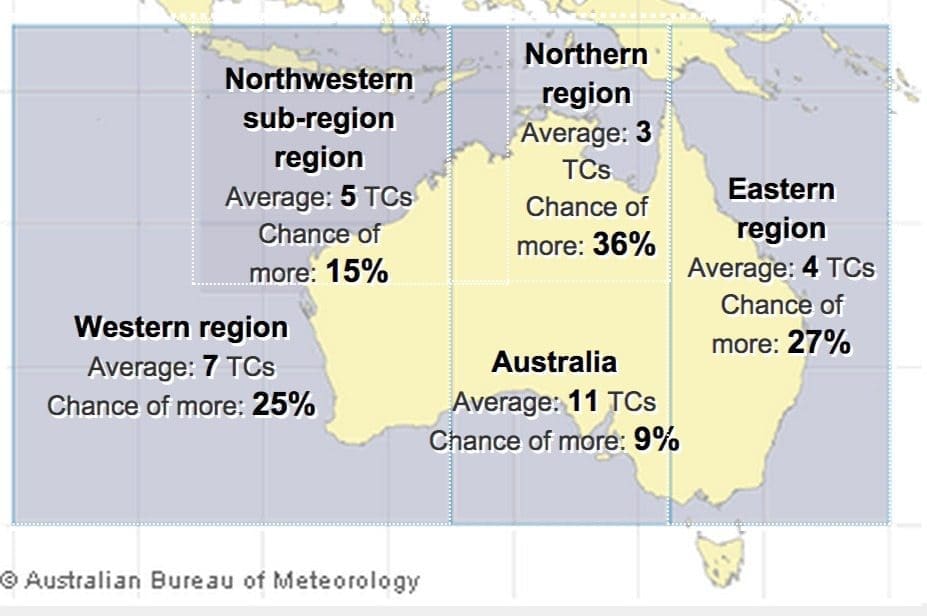Prevailing El Nino conditions are expected to reduce the number of cyclones across northern Australia year.
The Bureau of Meteorology is also predicting a later start to the 2015-16 Australian tropical cyclone season.
During El Niño seasons, it usually takes until the second week of January for the first tropical cyclone to cross the coast, which is later than during neutral years.
The Bureau says the entire Australian region has only a 9% chance of having more tropical cyclones than average, meaning a 91% chance of having fewer tropical cyclones than average.
Typically, around 4 tropical cyclones cross the Australian coastline in a season. Outlook accuracy for the Australian region is high.
The Western region is most likely to experience fewer tropical cyclones than average this season, with a 25% chance of more tropical cyclones than average (meaning a 75% chance of fewer tropical cyclones than average). Typically between about 15% and 40% of tropical cyclones in the Western region will have an impact upon the coast. Outlook accuracy for the Western region is low.
The Northwestern sub-region is most likely to experience fewer tropical cyclones than average this season, with a 15% chance of more tropical cyclones than average and an 85% chance of fewer tropical cyclones than average. Typically, five cyclones form in or pass through this area each season. Around 40% of tropical cyclones in the Northwestern sub-region impact on the coast at some stage in their life cycle. Outlook accuracy in this region is moderate.
The Northern region is most likely to experience fewer tropical cyclones than average this season, with a 36% chance of more tropical cyclones than average; 64% chance of fewer tropical cyclones than average. In an average year the Northern region typically experiences three cyclones, and one or two tropical lows that later become cyclones after moving into the Western or Eastern regions. About three-quarters of the tropical cyclones in the Northern region impact the coast. Outlook accuracy in this region is very low.
The Eastern region is most likely to experience fewer tropical cyclones than average this season, with only a 27% chance of more than average; 73% chance of fewer than average. About a quarter of tropical cyclones in the Eastern region make landfall. Outlook accuracy in this region is low.
El Niño patterns typically reduce the number of coastal crossings, but at least one tropical cyclone has crossed the Australian coast each cyclone season since reliable records began in the 1970s.
While El Niño shifts the odds towards both fewer cyclones and a later first cyclone coastal crossing of the season, it does not guarantee this will always occur. For instance, during the strong El Niño 1997–98, tropical cyclone Sid formed in late December near Darwin before moving into the Gulf of Carpentaria and weakening. The remnant low produced record, devastating floods two weeks later over northern Queensland.




HAVE YOUR SAY